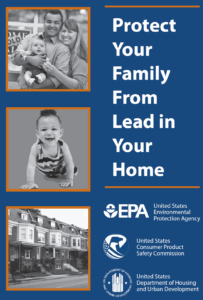Understanding the Difference Between Lead Clearance and Lead Risk Assessment
If you own or manage older homes—especially those built before 1978—understanding the difference between a lead clearance examination and a lead risk assessment is crucial for keeping your property safe and compliant. Here’s what every home inspection company and property owner should know.
What Is a Lead Clearance Examination?
A lead clearance examination is a process conducted after lead hazard control activities—such as abatement, interim controls, or renovations—to verify that a property is safe for occupancy. It is typically required before a property can receive a Lead Safe Certification in cities like Cleveland.
Key Features:
- Purpose: Confirms that lead hazards have been properly addressed and that the property is safe for residents, especially children.
- Process:
- Visual inspection for dust, debris, and deteriorated paint.
- Collection of dust wipe samples from floors, windows, and other surfaces.
- Laboratory analysis of samples to ensure lead levels are below regulatory limits.
- Who Performs It: Certified lead risk assessors, lead inspectors, or clearance technicians.
- When Required: After lead abatement, interim controls, or as part of Lead Safe Certification for rental properties.
Outcome: If the property passes, a clearance report is issued, which is necessary for compliance and certification.
What Is a Lead Risk Assessment?
A lead risk assessment is a comprehensive evaluation of a property to identify the presence, severity, and location of lead-based paint hazards before any remediation work is done.
Key Features:
- Purpose: Determines whether lead hazards exist, assesses the risk of exposure, and recommends actions to reduce or eliminate those risks.
- Process:
- On-site investigation, including visual inspection and collection of paint, dust, and sometimes soil samples.
- Analysis of the samples to identify lead hazards.
- Detailed report outlining findings and providing recommendations for hazard control or abatement.
- Who Performs It: Certified lead risk assessors.
- When Used: Typically performed before renovation, sale, or occupancy of a property, or when a child has an elevated blood lead level.
Outcome: Provides a roadmap for making the property lead safe by identifying specific hazards and recommending next steps.
Lead Clearance vs. Lead Risk Assessment: At a Glance
| Feature | Lead Clearance Examination | Lead Risk Assessment |
| Purpose | Verifies property is safe post-remediation | Identifies and evaluates lead hazards |
| When Conducted | After abatement/interim controls/renovation | Before remediation or sale/occupancy |
| Who Performs It | Certified risk assessor/inspector/technician | Certified risk assessor |
| Process | Visual check + dust wipe sampling | Visual check + sampling + hazard evaluation |
| Outcome | Clearance report for certification | Action plan for hazard control |
Why Both Are Important
- Risk assessments help you understand what hazards exist and what needs to be done.
- Clearance examinations confirm that the work was done correctly and the property is now safe.
For Cleveland property owners, both steps are essential for compliance with local Lead Safe Certification requirements and for protecting the health of residents.
If you would like a helpful guide on protecting your family from lead in your home here is a helpful and free pdf.

Take the Next Step with Cuyahoga Valley Inspections
Ready to ensure your property is lead-safe and fully compliant? Contact Cuyahoga Valley Inspections today at 330-510-5200. Our certified professionals are here to guide you through both lead risk assessments and clearance examinations, giving you peace of mind and protecting your investment.
Don’t wait—call now to schedule your inspection and take the first step toward a safer, healthier home!

